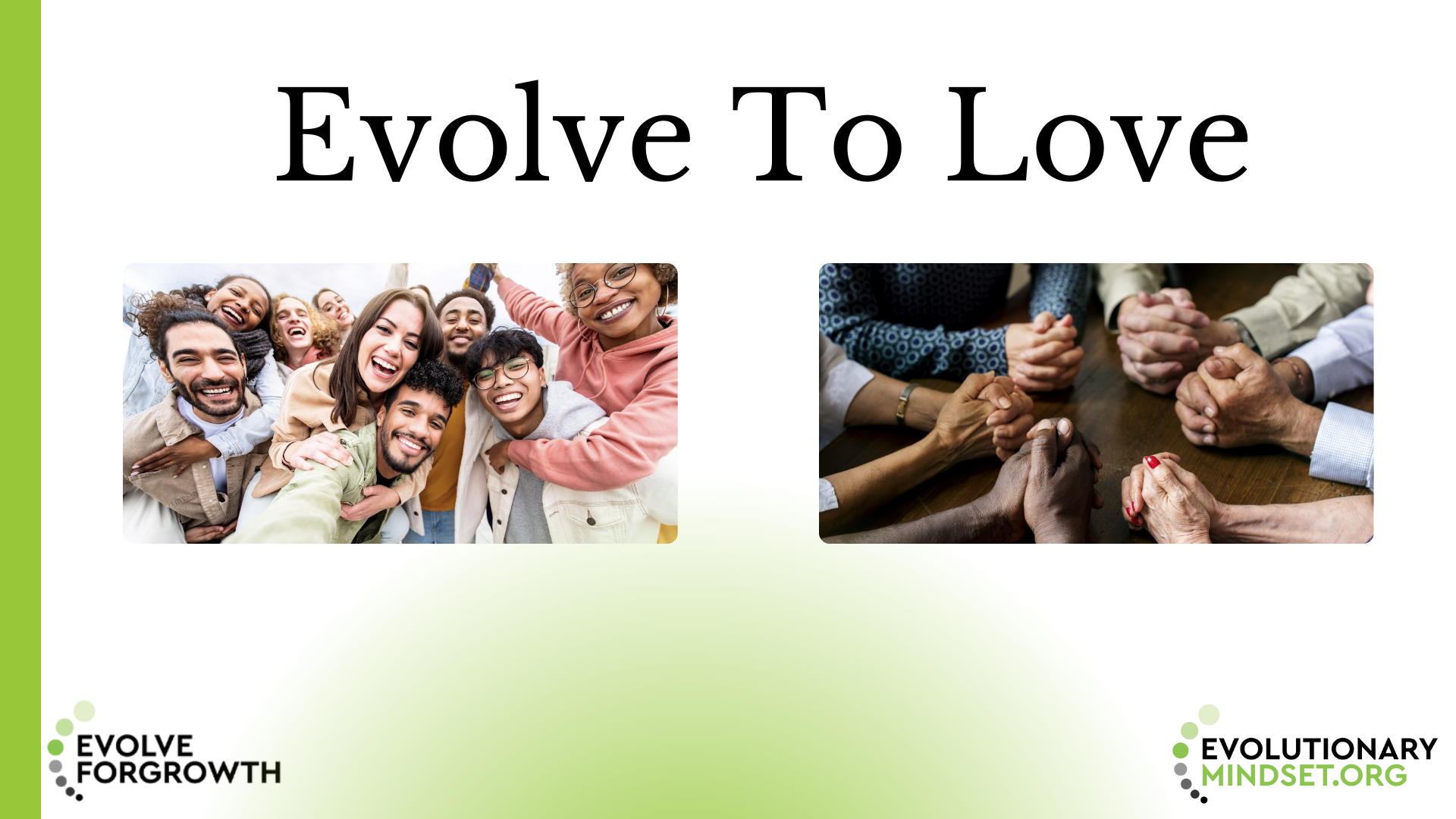
The Evolution of Love: The Science Behind a More Compassionate Society
Human evolution, as understood through the lens of Darwin’s evidence, began with self-focused organisms striving for individual survival. Over time, a transformative shift occurred, giving rise to sexual, parental, and social instincts, and fostering relationships for collective prosperity.
Evolution to Love – Evolution of the Brain
David Loye’s “Darwin’s Lost Theory of Love” delves into the evolution of emotions, highlighting a pivotal moment in 1937 when brain scientist James Wenceslas Papez discovered the limbic system. This newer brain structure, absent in reptiles, facilitated prolonged intimacy, vigilant audio-vocal contact, and the joy of companionship, laying the foundation for empathy and altruism.
Evolutionary Outcomes:
- Prolonged intimacy and nurturing behaviors
- Development of social bonding, empathy, and altruism
- Formation of ethical principles and moral standards
- Evolution to Love – Social Instincts
Loye explores the development of societies in tandem with evolving moral senses. Pleasure derived from societal bonds, a product of parental affection, became an essential component of survival. The evolution of social instincts marked a decisive step toward cherishing the company of others and fostering sociability.
Evolutionary Advantages:
- Reduction in risks through group living
- Indirect benefits of natural selection favoring cooperative behaviors
- Development of a deep need for relationships and sociability
- Evolution to Love – Morality and Community Selection
Community selection, historically driven by the dominator model, led to conflicts and moral superiority convictions. Loye introduces the partnership model, aligning with Darwin’s buried explanation of human evolution based on a higher-order love and moral sense. This model, coupled with positive teachings of spirituality, accelerates the evolution of the human species.
Loye identifies stages in the evolutionary process toward love, starting with nurture and progressing through compassion, sympathy, and empathy. The expanded brain capacity in humans, with complex neuronal interlinking, enables moral intelligence and the ability to connect observation with moral decision-making.
Key Stages of Evolution:
- Nurture – Pleasure in societal bonds
- Compassion – Relief of others’ suffering
- Sympathy – Understanding from our perspective
- Empathy – Understanding from others’ perspective
- Evolution to Love – Altruism, Empathy, and Morality
As language and mental faculties advanced, group wishes could be expressed, leading to a consensus on actions for the greater good. The evolution toward altruism, driven by moral intelligence, reflects the interplay between selflessness and selfishness. Cultural transmission emerges as a central factor influencing humanity’s evolution toward a more loving society.
Evolutionary Motivations:
- Altruism – Unselfish actions for others’ well-being
- Empathy – Understanding others’ feelings
- Morality – Distinguishing right from wrong
- Cultural transmission – Influencing evolution toward love
The Future Is Coming… Slowly
Evolution, though typically gradual, can undergo rapid adaptations. Human evolution, spanning billions of years, has seen significant developments in brain complexity. The evolution of wars, rooted in human conflict, remains a challenge, but the potential for a more loving, kinder, and peaceful future is evident through evolutionary science.
In conclusion, the science of evolution provides a compelling narrative for the gradual yet transformative journey toward a more compassionate and loving human society. As individuals and businesses align with evolutionary principles, the potential for positive change and a future grounded in love becomes increasingly evident.
Looking to learn more? Feel free to read the rest of my blog or check out my book EVOLVE FOR GROWTH available on Amazon: https://amzn.to/3QY2ONB
View the video on YouTube
